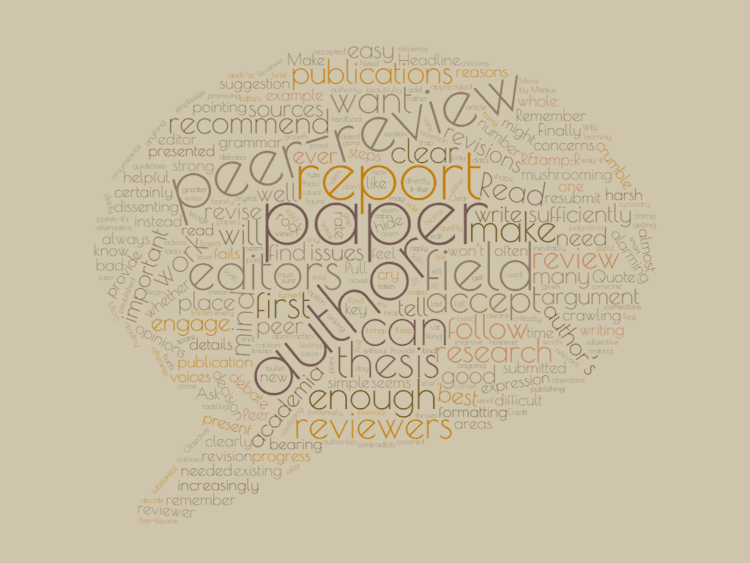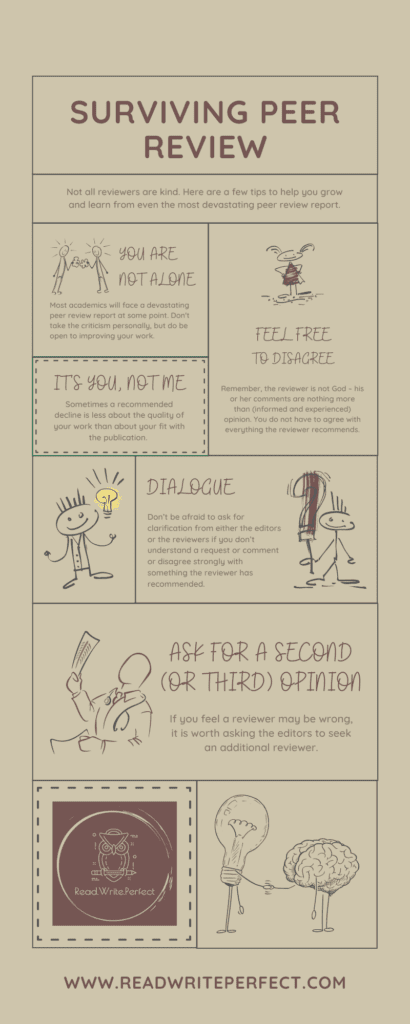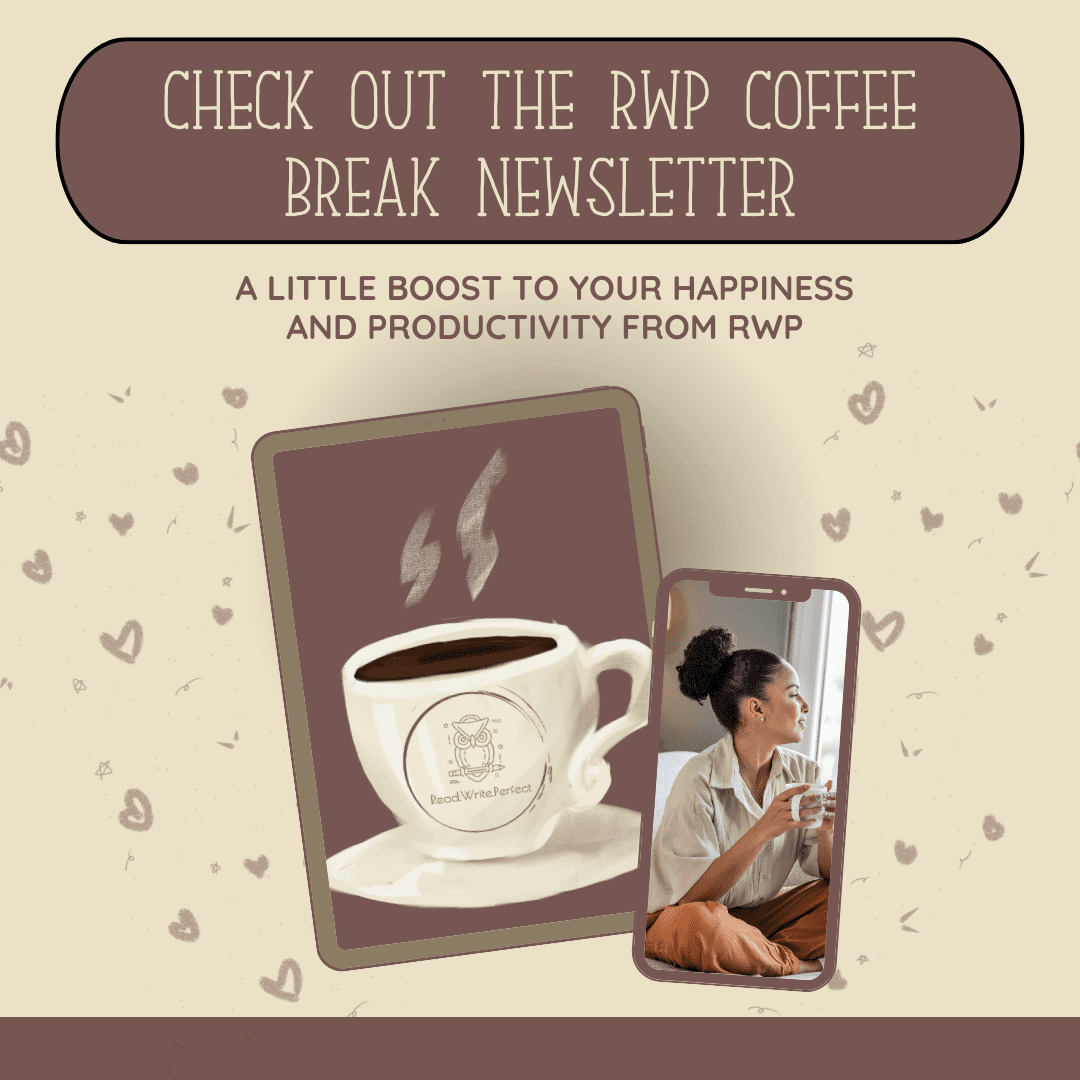
While subjecting your research to the peer review process of a journal or publisher for the first time may feel daunting, it is a step every serious researcher needs to take – sooner rather than later. Use this article as your primer for surviving and growing from your first peer review.
One caveat: My experience here is primarily (although not exclusively) in the humanities. The peer review process for the sciences may differ slightly – if you are not sure, check the website of your chosen journal – most share the details of their peer-review process somewhere.
There are three primary different types of peer review: single blind, double blind, and open. Although double blind review remains the most common form of peer review, other forms are now becoming popular as well, as the peer review process is coming under increased scrutiny.
Think of the peer review process as a way of gauging your future reader’s reactions, questions, and needs. The process will show you where your writing is clear and compelling and where you need to be clearer or more convincing in your presentation of your research to others. It also helps both your and your chosen publication ensure that your work will really be reaching the best audience for it.
When you submit your work to an academic journal or publisher, a panel of editors will first review it for basic fitness: length, readability, fitness for the publication, and so on.

I have seen articles rejected at this stage for not being readable in the target language (too many grammar and expression errors), for being on a topic not covered by the publication, or for being too short or too long (often the case with conference presentations and dissertation chapters being adapted for publication).
It is therefore definitely worth having others review your work before you submit it – up to and including seeking professional proofreading/editing support. It is also essential to carefully review the publication’s submission guidelines and make sure you comply with them.
Assuming they find no glaring reasons to reject it out of hand, the editors will begin to search for your “peers” in the field: others of a similar level of experience who are also researching and publishing on the same topic as you. They will then begin contacting those peers and asking them if they would be willing and interested in reading your submission. Most journals aim to find at least two (and usually no more than three) reviewers to simultaneously review an article.
If you currently have an article being reviewed by a journal and are wondering why months have gone by with no movement, consider the process above. Contacting each reviewer, awaiting a “yea” or “nay,” sharing the article, waiting for the reviewer to read it, and then waiting for the reviewer to produce a report is a time-consuming process.
Reviewers who agree to peer review an article are given a reasonable time-frame in which to read your work and produce a report and recommendation (typically several weeks). Their report will enumerate both the strengths and the weaknesses of your piece in the areas of research, readability/clarity, and (sometimes) formatting and presentation. Standard recommendations vary from publication to publication, but the typical recommendations fall into three categories:
For a piece to receive the first and last recommendations on the first pass is pretty unusual, so don’t be disheartened if your first submission is not immediately accepted. Most texts receive a recommendation of “revise and resubmit”—as with any text, the first draft is never as strong as later drafts acting on specific feedback.
Once all of the reviewer reports are in, the editors will make a decision based on all of the reviewer recommendations. They will then let you know that decision, as well as (usually) sharing the reports (or at least a summary of relevant points).
If the editors’ decision is “revise and resubmit,” you will most likely be given a deadline by which to revise your work in line with the reviewers’ suggestions. The editors may then choose to accept the piece, have it re-reviewed, or decline it if they feel the reviewers’ suggestions have not been met.
You may also decide to take your work to a different publication and/or radically revise it, depending on the feedback and recommendations of the reviewers.
1. Remember you are not alone.
Even the most famous and distinguished academics have faced a devastating peer review report at some point. Remember not to take the criticism personally, but do be open to improving your work.
2. Feel free to disagree.
Remember, the reviewer is not God – his or her comments are nothing more than (informed and experienced) opinion. You do not have to agree with everything the reviewer recommends, although it is worth thinking carefully about even insensitively worded criticisms.
Sometimes a recommended decline is less about the quality of your work than about your fit with the publication. If the publication has too many other articles on the same topic, a slightly different tone or stance, or an overall theme that your article does not fit into, it may be rejected despite being perfectly publishable. Don’t take it personally; do ask for feedback (if it isn’t given) and take your work elsewhere.

Don’t be afraid to ask for clarification from either the editors or the reviewers if you don’t understand a request or comment or disagree strongly with something the reviewer has recommended. The editors may or may not agree with you, but you won’t know unless you try.
If you feel a reviewer may be wrong, biased, unduly harsh, misunderstanding your argument, ideologically opposed to your topic, or for any other reason not appropriate to have reviewed your work, it is worth asking the editors to seek an additional reviewer. While you are not guaranteed a different result (and the editors might not agree), this option is worth pursuing if you have good reason to feel their recommendation is wildly off target.
Ask your colleagues, seek support from your supervisors, get help from a dissertation coach, or browse CFPs to start getting your work out into the wider academic world.
